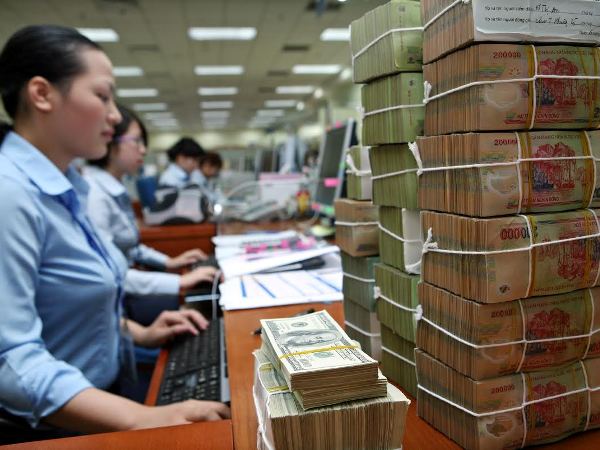 Economy
Economy


|
| The credit growth as of April 17 this year hit four-year low of 3.23 per cent. — VNA/VNS Photo |
HÀ NỘI — Despite credit growth among Vietnamese credit institutions remaining low this year, experts are not concerned about the slowdown, saying it was a good sign for the economy.
Reports from the State Bank of Việt Nam (SBV) showed credit growth as of April 17 this year had expanded by 3.23 per cent against the end of 2018, the lowest rise in the last four years. The rates during the same periods of 2018, 2017 and 2016 were 5 per cent, 5.2 per cent and 4.2 per cent, respectively.
Cấn Văn Lực, chief economist of the Bank for Investment and Development of Vietnam (BIDV), said he was not surprised at the moderate credit growth, explaining the SBV had targeted controlling credit growth since the beginning of this year to curb inflation and stabilise the macro-economy.
According to Lực, local firms were no longer too dependent on bank loans as they could raise capital from the securities and bond markets. The domestic market had also witnessed new capital supply channels, such as fintech and peer-to-peer companies.
As a result Lực said moderate credit growth was a good sign for the economy.
In addition, restructuring of bank loans had improved, he said, explaining that bank loans were pouring into the production and business sectors, which were key drivers for the country’s economic growth.
According to the SBV’s Department of Credit for Economic Sectors, despite slow credit growth, bank loans had been issued for the Government’s priority sectors, of which credit for high-tech enterprises surged by 7.25 per cent. The rise for supporting, export, and agriculture and rural sectors hit 3.63 per cent, 3.5 per cent and 4.8 per cent, respectively.
According to Nguyễn Ánh Dương, director of the General Research Department under the Central Institute for Economic Management (CIEM), low credit growth had reflected the SBV’s move to control loans for high risk sectors and focus on production.
This year, the SBV has a credit growth target of 14 per cent for the entire banking system - the same as last year – and experts believe this to be reasonable.
Nguyễn Đức Thành, director of the Vietnam Institute for Economic and Policy Research, said Việt Nam’s economic growth often relied heavily on increased credit, times have changed. Now, the economy can grow without strong lending, particularly when the supporting industry as well as the services and agricultural sectors are becoming more attractive to foreign investors.
According to Thành, there was no reason for higher credit growth this year when the economy was still gaining without needing more capital.
Expert Đinh Trọng Thịnh from the Academy of Finance said that credit growth should be from 12.5-14 per cent as businesses would expand operations by mobilising capital from the securities market, instead of needing more bank loans.
Moody’s Investor Services also hailed the moderate credit growth, saying it was positive for banks' asset quality and capitalisation.
According to Moody’s, tighter credit could lead to rising problem loan ratios, reflecting the seasoning of banks’ loan portfolios. However, lower credit growth encouraged banks to focus on borrowers of better quality, which would improve asset quality in the long term.
Moderate credit growth would also lower pressure on capital, especially for State-owned banks, the ratings agency said.
Analysts from Bảo Việt Securities Co (BVSC) forecast credit growth would be around 14 per cent for the next few years, lower than the average rate of 18 per cent recorded from 2015-17. VNS









